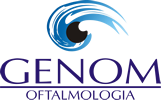
Sessão de Trabalhos Científicos - Apresentação Oral
Código
TL02
Área Técnica
Catarata
Instituição onde foi realizado o trabalho
- Principal: Hospital de Base do Distrito Federal (HBDF)
Autores
- PATRICK FRENSEL DE MORAES TZELIKIS (Interesse Comercial: NÃO)
- Clézio S Morato (Interesse Comercial: NÃO)
- Nathália Teles Neves (Interesse Comercial: NÃO)
- Wilson Takashi Hida (Interesse Comercial: NÃO)
- Milton Ruiz Alves (Interesse Comercial: NÃO)
Título
PROPHYLATIC NEPAFENAC 0.3% VERSUS PLACEBO IN PREVENTING POSTOPERATIVE MACULA EDEMA AFTER PHACOEMULSIFICATION: PROSPECTIVE INTRAINDIVIDUAL RANDOMISED STUDY
Objetivo
To compare the anti-inflammatory efficacy of topical nepafenac 0.3% for prophylaxis of macular edema (ME) after cataract extraction assessed by OCT using central subfield thickness (CST, μm) as the indicator of macular swelling at 1, 5 and 12 weeks after phacoemulsification cataract extraction. This is the first eye-to-eye comparison of NSAIDs and placebo in preventing pseudophakic ME.
Método
Randomized prospective intraindividual comparative study.Two hundred and twenty-four eyes of 112 patients with bilateral cataract were included in this study. Each patient was assigned randomly to receive nepafenac 0.3% drops in one eye and a placebo in the fellow eye. Primary outcome measure was the change in spectral-domain optical coherence tomography mean central subfield thickness (CST) at 5 weeks postoperatively. The secondary outcome measures were the total macular volume (TMV) at 1, 5 and 12 weeks postoperatively, the percentage of patients in both groups who demonstrated macular edema, and the best-corrected distance visual acuity within 5 and 12 weeks after cataract surgery.This study was registered at clinicaltrials.gov as NCT02084576 (https://register.clinicaltrials.gov).
Resultado
In all retinal thickness measurements, a significant increase in both groups was detected starting from the first postoperative week until 12 weeks. At 5 weeks, there was a statistically significant difference in CST and TMV between the nepafenac and control group (P=0.01 and P<0.001, respectively). At the 5th post-operative week, none of the eyes in the nepafenac group and 4 (3.57%) eyes in the control group showed macula edema, highlighting a trend toward greater incidence in the control group. The between-group differences in visual outcomes were not statistically significant.
Conclusão
Used prophylactically after cataract surgery, nepafenac 0.3% was efficacious in reducing macular thickness compared to placebo at 5 weeks postoperatively, without a difference in final visual acuity.















